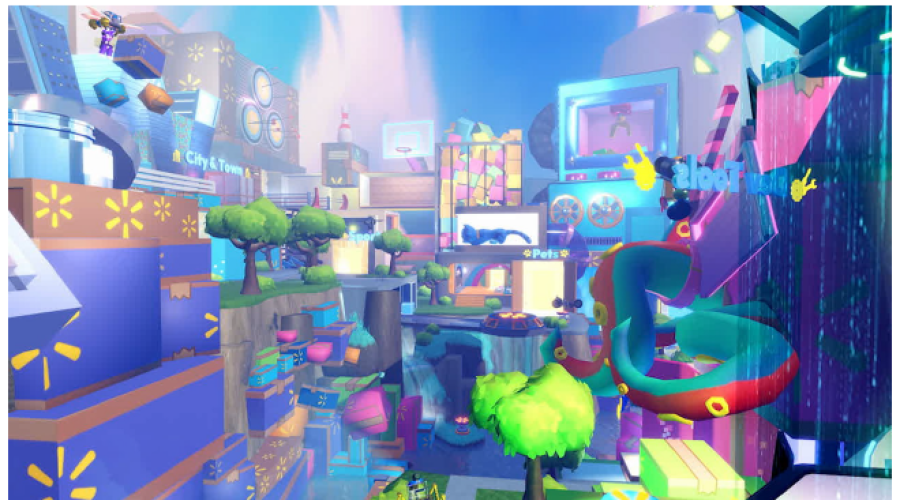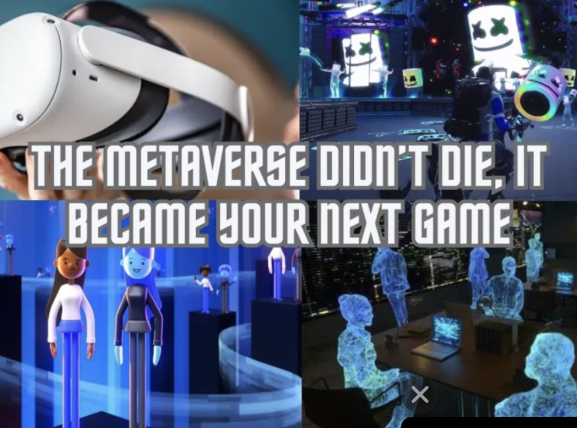Exploring the early stages of metaverse e-commerce in Q&A with Sawhorse
The consumer-facing metaverse may be years away from standing up a substantive e-commerce revenue stream, but recent moves by retailers into virtual experiences, such as Walmart Inc. into Roblox Corp., are paving the way to that future one product at a time.
Sawhorse Productions LLC was the primary force behind the development of Walmart Discovered, giving the digital agency a clear view of the metaverse landscape for brands and retailers. S&P Global Market Intelligence Kagan recently conducted an email interview with Nic Hill, head of interactive at Sawhorse, to break down the key challenges and opportunities in bringing retail to the metaverse. The exchange with Hill, coupled with results from our recent consumer metaverse survey, netted some specific insights.
The consumer-facing metaverse has so far been largely powered by in-game purchases, wherein consumers use real money to purchase new avatars, clothes and other ways to augment their virtual experiences. However, we expect that this particular model will eventually lose momentum and that the long-term health of the consumer-facing metaverse will depend on adopting models native to the flat internet, such as e-commerce, advertising and potentially even streaming video.
The early stages of that future are already taking shape, but it will be important for brands and developers to examine successes and failures on the ground in real time. Building engaging software is often an iterative process that will happen over time and after a fair bit of trial and error.
So far, Roblox appears to be the primary target for retailers in the metaverse due to its high active user count and cultural cachet with a rising class of young consumers, as well as other intangibles such as a focus on nonviolent gameplay and its ability to run on relatively low-spec hardware. We also expect that many lessons learned in Roblox might also apply, at least in broad strokes, to Epic Games Inc.’s Fortnite.
Advertising or just setting up a presence in the metaverse is a relatively light lift in terms of infrastructure, as display ads and brand installations are already core pillars of the Roblox experience, even if advertising dollars have not yet emerged in large numbers. A similar story could be told for streaming video.
Selling real goods in virtual spaces is a little more complicated. There are questions surrounding product presentation, how to link those products to retailers and how to mechanize the platform’s revenue share.
Sawhorse worked with Walmart in April to bring a pilot program to Roblox with three physical items for purchase inside the Walmart Discovered space: a travel mug, a handbag and a pair of headphones. Those who purchased the physical goods received a digital twin of the item for their in-game avatars.
The item purchase is tied to a Walmart account, and the checkout process largely resembles Walmart’s website but keeps users within the Roblox application.
Walmart Discovered is itself a form of digital advertising. The brand installation allows users to engage with the Walmart brand in minigames and offers users an array of virtual goods to purchase for their avatars.
Other retailers in the metaverse include IKEA A/S, The Gap Inc. and Claire’s Holdings LLC, but to the best of our knowledge, Walmart is the only one selling physical goods in virtual 3D spaces.
Sawhorse is a big name at the intersection of retail and interactive entertainment, but there are other developers and digital agencies to watch, such as Atlas Creative, Dubit Ltd. and Supersocial Inc.
For now, let’s hear directly via edited email transcript from Nic Hill, head of interactive at Sawhorse Productions, as we break down the key challenges and opportunities in bringing retail to the metaverse and more about the Walmart project.
S&P Global Market Intelligence: What was Walmart’s original mission statement with Discovered, and can you talk a bit about the process of building that space?
Nic Hill: Our original goal was to bring Walmart to Roblox, engage authentically with the community and build an experience based on the brand’s ethos, "Save money. Live better." Discovery of games and avatar wearables is challenging on Roblox, so we designed a game to help Roblox players find new and valuable games and wearables, thus "living better" on the platform. We’ve built a huge community of users, and we continue to update the game and drive value for them daily.
What are some of the key goals and success metrics you look at with a project like Walmart Discovered?
Goal number one for us is showing up authentically and being accepted by the Roblox community. There are so many examples of brands that don’t understand the community and build games that nobody wants to play. We’ve maintained a strong 96%-like ratio for Walmart Discovered, and we view that as a real success. Another goal is traffic and engagement time. We’ve had over 23 million visits to the game to date, with users coming back frequently and making it part of their Roblox routine. And lastly, we’ve been able to monetize the game by curating and selling digital wearables and introducing direct in-game e-commerce to the platform at large.
And when did the idea of selling physical goods come to the table?
As a large retail corporation, Walmart has always had a long-term vision of selling physical goods on Roblox. At Sawhorse, we’re bullish on helping brands not only market on the platform but also helping them move down the funnel to direct sales, loyalty and conversion to drive the most relevant value possible. For example, we just worked with Fandango to sell movie tickets inside our Beetlejuice Roblox game, promoting the new film for our client Warner Brothers.
What were some of the challenges in bringing the sale of real-world goods into Discovered?
There were several challenges in bringing e-commerce to Roblox. First off, the ability to sell real-life items on the platform is not technically possible or allowed, so we had to partner directly with Roblox to develop a custom workflow that was approved from both a technical and policy perspective. Next was the problem of figuring out how to roll out e-commerce in a community-first way so it would be well received by the Roblox players. To do this, we partnered with prominent UGC [user-generated
content] wearable creators from the community to help select a limited amount of cost-effective and desirable real-life Walmart goods that the user base would be interested in. Those creators then built digital twins of those items and added their own creative additions to the items, making the shopping experience unique and fun.
What was the response from consumers and from Walmart? Does it seem like there is appetite for buying and selling real-world goods in virtual spaces at this time?
Yes. Our e-commerce launches on Roblox have been a success. They’ve been well received by the community, and Walmart is continuing to roll out more e-commerce releases inside of the Walmart Discovered game, as well as other Roblox games. We recently released an e-commerce drop inside of the e.l.f. UP! Tycoon game owned by e.l.f. Cosmetics because e.l.f. products are sold at Walmart.
What is Roblox’s role in any of this?
Roblox is a crucial partner in making this all possible. We’re in a tight partnership with them and Walmart to pioneer this e-commerce innovation in a test-and-learn capacity. We work together to drive the initiative forward one launch at a time. It and Walmart have been and continue to be inspiring partners.
What advice would you give other retailers if and when they enter virtual spaces?
My main piece of advice to retailers looking to enter the UGC gaming or "metaverse" space is to first attempt to understand and respect the communities they are entering. This isn’t traditional top-down marketing. Players are opting in to engage with these games, so brands need to build compelling games/experiences that speak to audiences there and drive value for them. My other piece of advice would be for them to really take this space seriously. All studies point to the fact that younger audiences (Gen Z and Gen A) are spending substantial amounts of time inside these gaming spaces as opposed to traditional media channels (TV, movies, social media). Brands and retailers who aren’t able to meet the customers of tomorrow where they’re at will become less relevant and run the risk of losing substantial market share. Walmart understands this and is skating to where the puck is going. We think it’s a smart move.
SPGlobal







